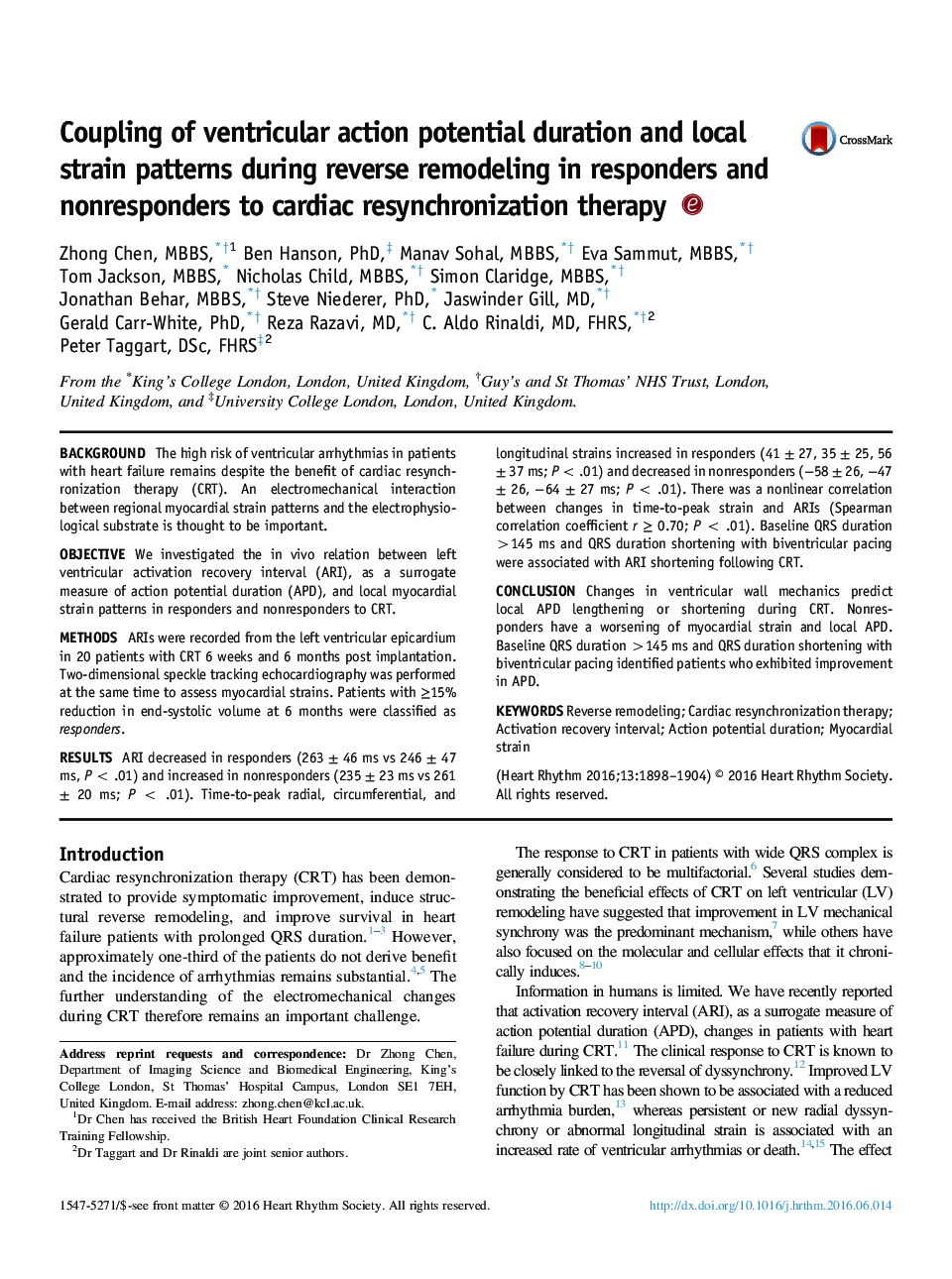| Article ID | Journal | Published Year | Pages | File Type |
|---|---|---|---|---|
| 2921684 | Heart Rhythm | 2016 | 7 Pages |
BackgroundThe high risk of ventricular arrhythmias in patients with heart failure remains despite the benefit of cardiac resynchronization therapy (CRT). An electromechanical interaction between regional myocardial strain patterns and the electrophysiological substrate is thought to be important.ObjectiveWe investigated the in vivo relation between left ventricular activation recovery interval (ARI), as a surrogate measure of action potential duration (APD), and local myocardial strain patterns in responders and nonresponders to CRT.MethodsARIs were recorded from the left ventricular epicardium in 20 patients with CRT 6 weeks and 6 months post implantation. Two-dimensional speckle tracking echocardiography was performed at the same time to assess myocardial strains. Patients with ≥15% reduction in end-systolic volume at 6 months were classified as responders.ResultsARI decreased in responders (263 ± 46 ms vs 246 ± 47 ms, P < .01) and increased in nonresponders (235 ± 23 ms vs 261 ± 20 ms; P < .01). Time-to-peak radial, circumferential, and longitudinal strains increased in responders (41 ± 27, 35 ± 25, 56 ± 37 ms; P < .01) and decreased in nonresponders (−58 ± 26, −47 ± 26, −64 ± 27 ms; P < .01). There was a nonlinear correlation between changes in time-to-peak strain and ARIs (Spearman correlation coefficient r ≥ 0.70; P < .01). Baseline QRS duration >145 ms and QRS duration shortening with biventricular pacing were associated with ARI shortening following CRT.ConclusionChanges in ventricular wall mechanics predict local APD lengthening or shortening during CRT. Nonresponders have a worsening of myocardial strain and local APD. Baseline QRS duration >145 ms and QRS duration shortening with biventricular pacing identified patients who exhibited improvement in APD.
